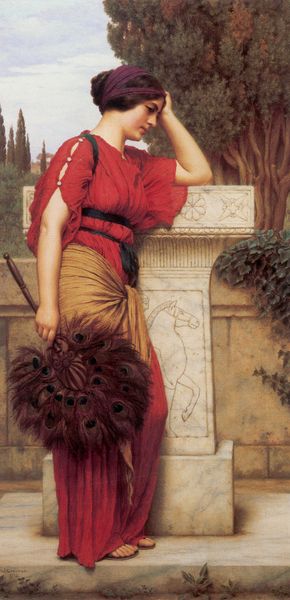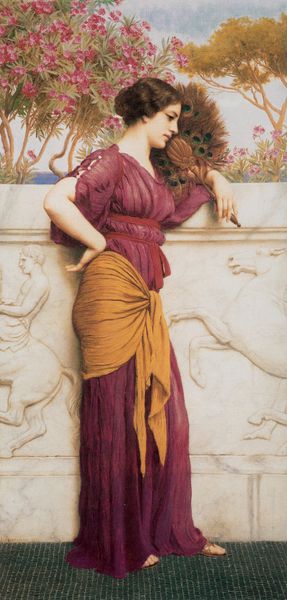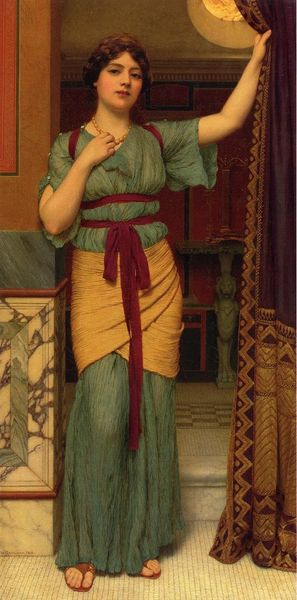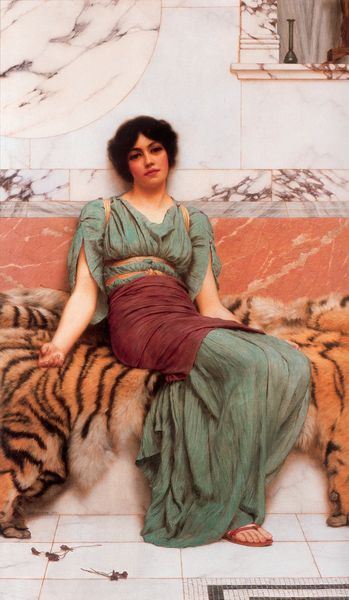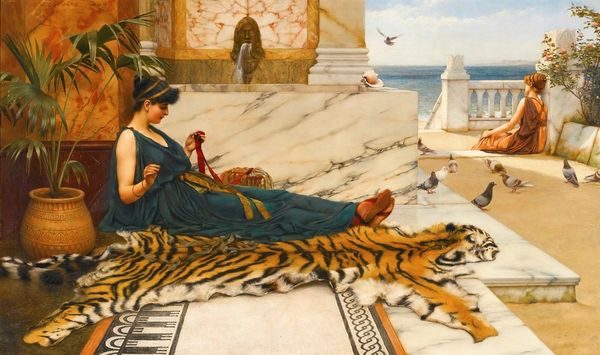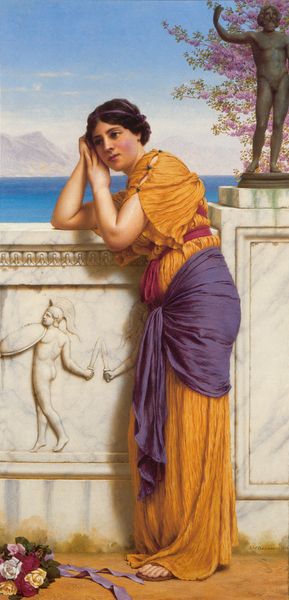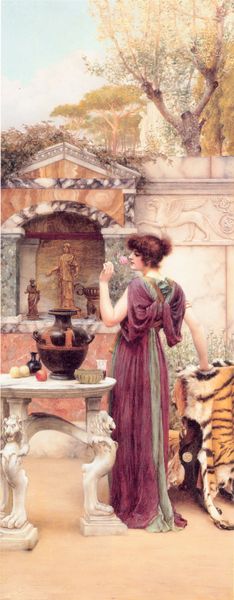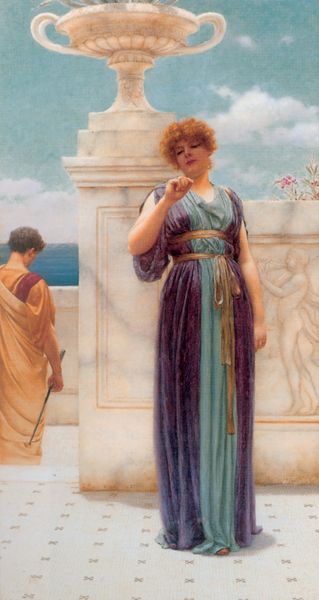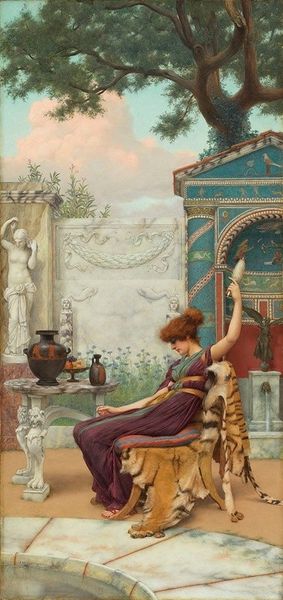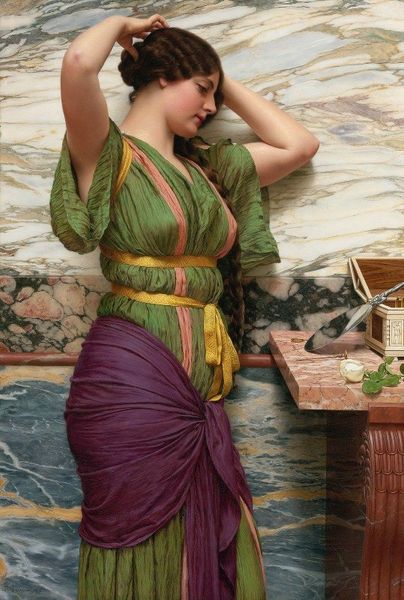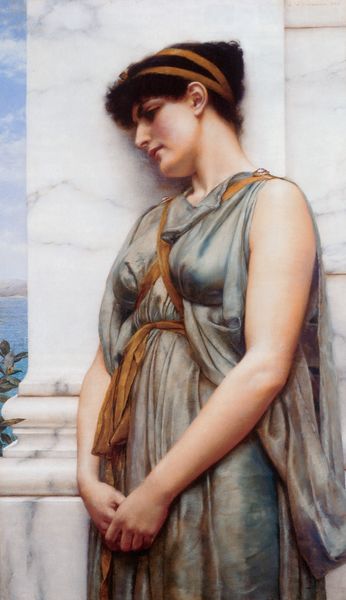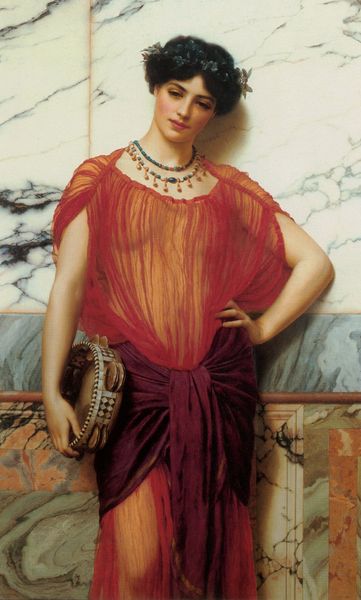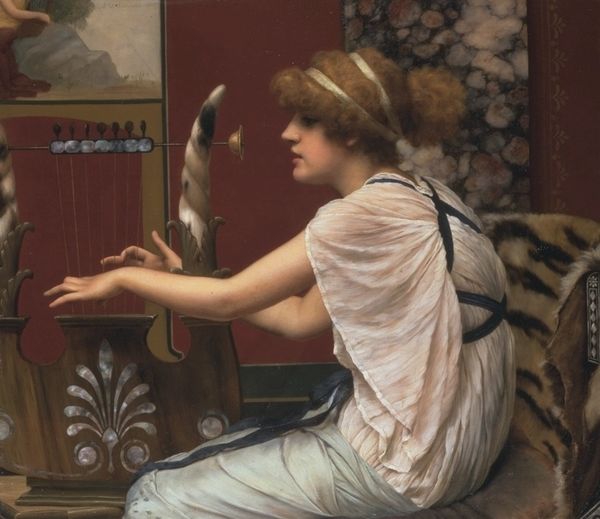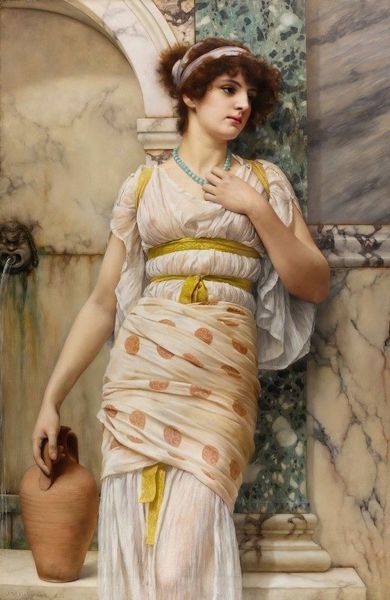
painting, oil-paint
#
portrait
#
gouache
#
neoclassicism
#
painting
#
oil-paint
#
figuration
#
romanesque
#
coloured pencil
#
history-painting
#
academic-art
Copyright: Public domain
Editor: This is John William Godward's "A Pompeian Lady" from 1891, rendered in oil paint. There's such a striking stillness to it. The woman, the marble, even the tigers seem frozen. How do you interpret this work? Curator: For me, it's a window into the material aspirations of the late 19th century. Notice the conspicuous display of wealth: the marble, the mosaic floor, and the fabrics of her dress. Godward, like many of his contemporaries, fetishized the classical world, but through a very specific lens – one of bourgeois comfort and aesthetic consumption. Editor: So, you're saying the focus isn't just on classical beauty, but on the *things*? Curator: Precisely. It's not about the ideals of the Roman Republic, but about the ability to acquire and display objects associated with it. Consider the production of oil paints at the time; they were becoming increasingly industrialized, allowing artists to create these highly polished, almost photographic surfaces that catered to the tastes of wealthy patrons. Where were those paints manufactured? Who mined the marble for the walls, and under what conditions? These questions are key. Editor: That’s interesting; it’s easy to get lost in the romanticism and not consider the labor and industry that enabled its creation. And those tigers – presumably a symbol of status as well? Curator: Exactly! Their pelts, most likely acquired through colonial exploitation, become another commodity to be consumed visually. Godward presents us with a carefully constructed image designed for a market hungry for exoticism and historical grandeur, but blind to its own complicity in systems of production. Editor: I see it now. I was initially drawn to the aesthetics, but understanding the material context gives it so much more depth. It really puts a different spin on what the artist was *really* trying to capture. Curator: And how that relates to the systems of production both then and now. Always ask, “Who made it, and at what cost?”
Comments
No comments
Be the first to comment and join the conversation on the ultimate creative platform.
